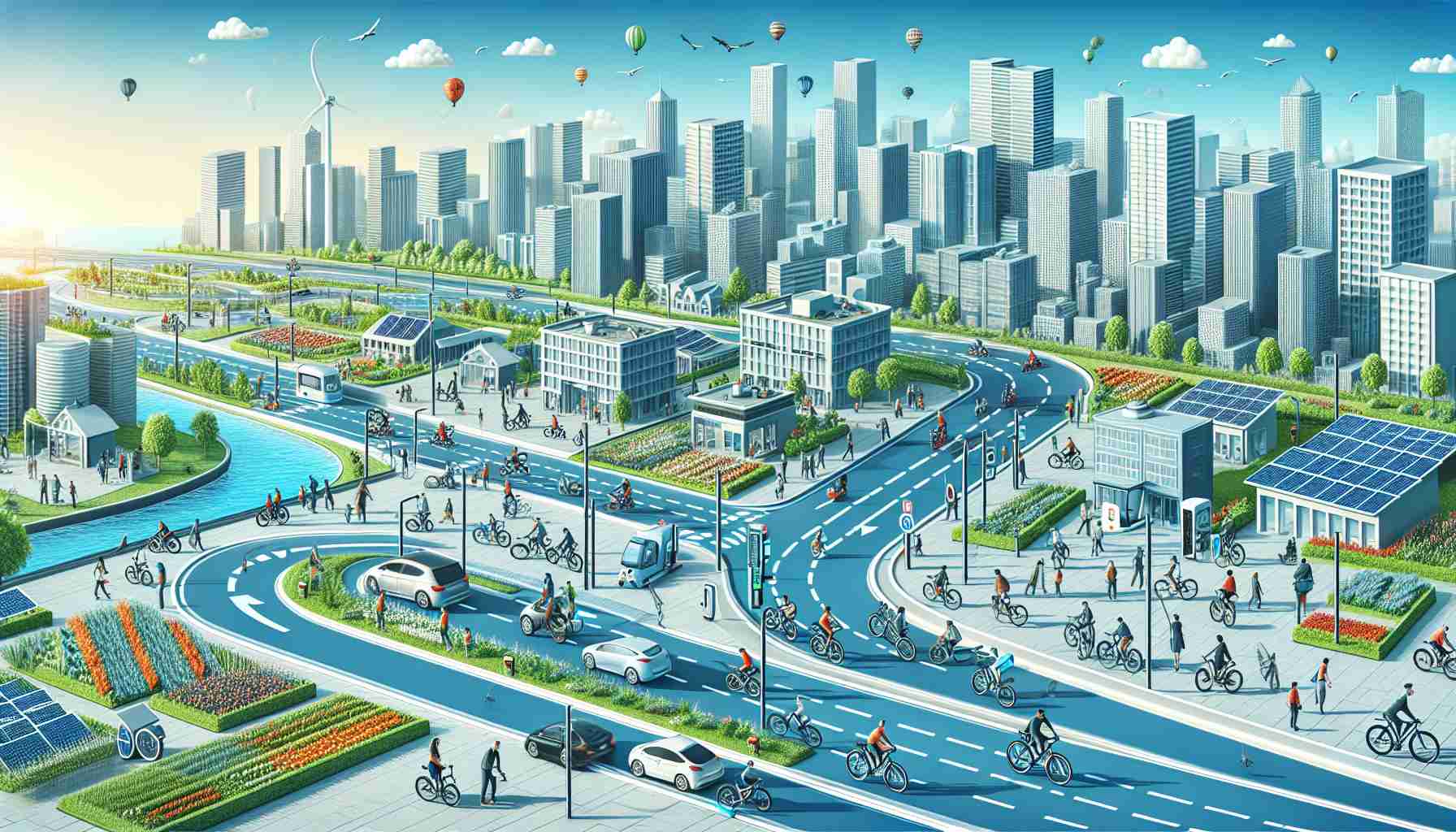Electric cars have long been the poster child for sustainable transportation, but a new contender has quietly taken the stage. According to data from the Light Vehicle Association, electric bikes outsold all other vehicles in the United States in 2021, with a staggering 790,000 imports of these two-wheelers. The growth in e-bike sales shows no signs of slowing down, leading transport researcher John MacArthur to declare 2023 as the “year of the e-bike.”
Sales of electric bikes in the US have experienced a remarkable 269% increase between 2019 and 2022, as reported by Circana and ABC News. The market is now projected to reach a value of $2.59 billion, according to figures from Grand View Research cited in the Guardian. So, what has caused this surge in popularity?
One factor that may have influenced the shift in attitude towards e-bikes is the coronavirus pandemic. As public transportation became less accessible, people began searching for alternative and efficient ways to get around. The need for socially distanced transportation solutions, coupled with the desire to reduce reliance on gas-guzzling vehicles, has pushed e-bikes into the mainstream.
Furthermore, cities and states are increasingly recognizing the need to cut pollution and congestion. In response, many locations have implemented e-bike rental programs, making them more accessible to a wider audience. Additionally, over 100 city and state incentives, documented in MacArthur’s E-Bike Incentive Programs of North America Tracker, are encouraging individuals to embrace e-bikes as a viable transportation option.
However, for electric bikes to truly thrive, the development of appropriate infrastructure is crucial. To ensure the safety and convenience of cyclists, designated bike lanes need to be implemented in cities and communities. This will improve confidence among riders and attract more people to switch from traditional cars to eco-friendly e-bikes.
Electric bikes offer significant environmental benefits. They produce far less pollution than conventional vehicles, and their combination of human power and electric motor reduces the energy required to travel. This also diminishes the reliance on an energy grid predominantly powered by coal, thereby mitigating air pollution and its contribution to rising global temperatures.
As we embrace 2023 as the “year of the e-bike,” it is imperative to recognize the role that pollution-free travel plays in combatting climate change. Electric bikes have emerged as a sustainable and inclusive mode of transportation, capturing the imagination of people from all walks of life. Whether it’s youthful travelers, busy professionals, or even our own moms, e-bikes are transforming the way we move, reducing our carbon footprint, and contributing to a greener future.
The electric bike industry is experiencing unprecedented growth and is projected to continue its upward trajectory. According to data from the Light Vehicle Association, electric bikes outsold all other vehicles in the United States in 2021, with imports of these two-wheelers reaching a staggering 790,000. Sales of electric bikes in the US have seen a remarkable 269% increase between 2019 and 2022. This surge in popularity is expected to propel the market value to $2.59 billion, according to research by Grand View Research cited in the Guardian.
One factor contributing to the rise of e-bikes is the coronavirus pandemic. As public transportation became less accessible and people searched for socially distanced alternatives, e-bikes emerged as a convenient and efficient mode of transportation. The desire to reduce reliance on gas-guzzling vehicles and the need for sustainable travel options have also contributed to the increased popularity of electric bikes.
Cities and states have recognized the environmental and congestion-reducing benefits of e-bikes and have implemented various initiatives to make them more accessible. E-bike rental programs have been introduced in many locations, allowing a wider audience to experience the convenience and sustainability of e-bikes. Additionally, there are over 100 city and state incentives documented in MacArthur’s E-Bike Incentive Programs of North America Tracker, which encourage individuals to embrace e-bikes as a viable transportation option.
However, for the electric bike industry to thrive, the development of appropriate infrastructure is crucial. The implementation of designated bike lanes in cities and communities is essential to ensure the safety and convenience of cyclists. This will not only improve the confidence of riders but also attract more people to switch from traditional cars to eco-friendly e-bikes.
Electric bikes offer significant environmental benefits compared to conventional vehicles. They produce much less pollution and the combination of human power and electric motor reduces the energy required to travel. This reduced energy consumption also helps mitigate air pollution and its contribution to rising global temperatures, as it diminishes reliance on an energy grid predominantly powered by coal.
As we enter 2023, the “year of the e-bike,” it is important to recognize the role that pollution-free travel plays in combating climate change. Electric bikes have emerged as a sustainable and inclusive mode of transportation, capturing the imagination of people from all walks of life. Whether it’s youthful travelers, busy professionals, or even our own moms, e-bikes are transforming the way we move, reducing our carbon footprint, and contributing to a greener future.
For more information on the electric bike industry and its market forecasts, you can visit the following websites:
– Light Vehicle Association
– Circana
– ABC News
– The Guardian
– Grand View Research
These sources can provide additional insights and data on the electric bike industry, market trends, and related issues.






















